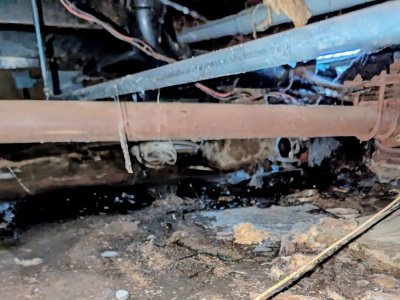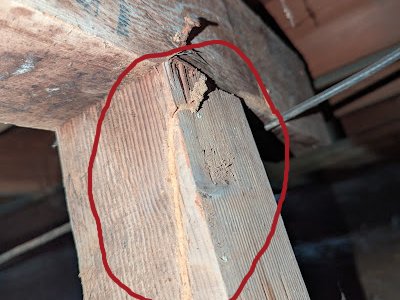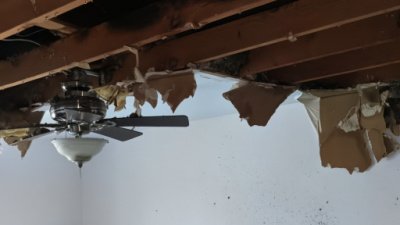A Long Day in the Life of a Termite Inspector
Mobile Homes and Crawlspaces
It was a Saturday, and I had four inspections. The first two were mobile homes. Mobile homes always come with a crawlspace. I actually like attics—no matter the temperature—because they’re more of a challenge. Crawlspaces… they’re almost never fun. They stay cool year-round, but they’re cramped, damp, and full of webs.
Google didn’t do me any favors that morning—it sent me to the wrong park. If you’ve ever been in a mobile home park, you know the numbering system makes no sense. Try parking near the park’s map and reading the numbers from your car—you’ll get nowhere. And hopefully, no one’s trailing behind you impatiently.
Already late, I finally found number 40. I knocked—no answer. I texted the customer and asked if his home was tan. He replied, “No, it’s green.” Damn you, Google.
When I arrived, the customer wasn’t upset. His home turned out to be free of termites. Some mobile homes only have wood inside the walls and ceiling, so if they do get termites, tenting is usually the only option. He had really called me because of his mom’s home—back at the first park I went to—where she had seen droppings on the window sill.
 Her home was mostly aluminum and Hardie board. Underneath, I found a plumbing leak—the bad kind, stinky enough to mean I was probably crawling through wastewater. But that’s why I wear coveralls and try not to think too much.
Her home was mostly aluminum and Hardie board. Underneath, I found a plumbing leak—the bad kind, stinky enough to mean I was probably crawling through wastewater. But that’s why I wear coveralls and try not to think too much.
This customer worked two jobs and still looked after his mom. That meant something to me, so I gave him a great deal. Before I left, he tipped me $20. I tried to refuse, but he insisted. Honestly, he probably needed it more than I did. I made a note to always take care of him when he needed help.
Hard-to-Reach Areas Often Hide Termites
The third appointment was 40 minutes away—a referral from a customer across the street. She had termite swarmers in a bathroom but didn’t see them until after they were gone. With recessed lighting, they probably came from the attic. Unfortunately, that section was inaccessible, which meant fumigation.
 Her crawlspace was dry but worse than the first two—about 2,000 square feet, divided down the middle by a wall with narrow openings on either side. It was too shallow to crawl on my knees, so I had to belly-crawl to one side, then squeeze through the opening to reach the other half.
Her crawlspace was dry but worse than the first two—about 2,000 square feet, divided down the middle by a wall with narrow openings on either side. It was too shallow to crawl on my knees, so I had to belly-crawl to one side, then squeeze through the opening to reach the other half.
I saw wood pillars near the front of the home, a ways away. The rule of termite inspections is true: the harder a spot is to reach, the more likely you’ll find something there. Sure enough, I found evidence of subterranean termites.
As far back as I was, it would take a full five minutes to get out. That’s when I start thinking about earthquakes or house fires—because breathing in the dust has affected my brain.
The customer wasn’t thrilled about tenting (no one ever is) and said she wanted to think about it. I never pressure anyone, so I told her to let me know.
When Old Termite Droppings Create New Problems
I arrived at my last inspection toward the end of the arrival window. The home was built on a slab—thank God, no crawlspace. Then the customer informed me he had three attics (of course).
 I started on the outside: I diagrammed the home, probed the perimeter wood, and found damage on all four sides. The garage attic had a chimney tube surrounded by inaccessible framing that was full of droppings. It looked like another fumigation case.
I started on the outside: I diagrammed the home, probed the perimeter wood, and found damage on all four sides. The garage attic had a chimney tube surrounded by inaccessible framing that was full of droppings. It looked like another fumigation case.
While setting up for the second attic, I mentioned what I’d found. The homeowner said he moved in five years ago but didn’t know if the house had been fumigated. I asked if he’d ever seen a white tag with red lettering—a fume tag. He hadn’t.
The second attic was the worst kind—blown-in TAP insulation. Impossible to crawl without dragging half of it out with you. And the roof had boards stretching side to side, so I had to limbo under them, straight into insulation. At the far corner—past three limbo boards—I found another drop-down section with droppings. Now we had two inaccessible areas that looked infested.
I also smelled smoke. The house was in a more rural section of Vista, so I wondered if a neighbor was burning something in their yard. I told the customer when I came down. He said he smoked a lot of meat, but what I detected didn’t smell like barbecue.
The third attic finally revealed the fumigation tag. The house had been fumigated five years ago. Most likely, the droppings in the chimney framing and attic were old.
Here’s one of my biggest pet peeves in termite control: companies that don’t mask or clean up droppings after a fumigation. It happens almost 100% of the time in real estate transactions. Why? Because the termite company’s relationship is with the realtor, not the buyer. They’ll offer a warranty, but they don’t promote it. If I could tell every homebuyer one thing, it would be this: hire your own termite company.
The problem is droppings don’t decompose or change with age. An inexperienced—or dishonest—inspector could see them and claim it’s an active infestation.
I recommended local treatment for the exterior wood, a borate treatment for the attics, and masking all the droppings so I could monitor them in future inspections. The customer agreed, and we scheduled the job for the following Saturday.
Where There’s Smoke…
 By the time I finished writing reports, it was evening. I was walking my dog around 6:30 when my phone rang. It was the last customer. He said he had gone back into the second attic and saw smoke. He used a fire extinguisher and called the fire department. Part of his ceiling was destroyed—but if he hadn’t stayed home waiting for my inspection, or if I hadn’t mentioned smelling smoke, his entire house could have burned down.
By the time I finished writing reports, it was evening. I was walking my dog around 6:30 when my phone rang. It was the last customer. He said he had gone back into the second attic and saw smoke. He used a fire extinguisher and called the fire department. Part of his ceiling was destroyed—but if he hadn’t stayed home waiting for my inspection, or if I hadn’t mentioned smelling smoke, his entire house could have burned down.
He had to postpone treatment, of course. Later, he texted me: “I have to be honest here. If it wasn’t for you mentioning that you smelled something, I would have never thought of checking the attic. Thank you.”
I was upset I didn’t spot the source myself, maybe dig into the insulation more. But that text made me feel a little better.
Takeaway for Homeowners:
- Crawlspaces and attics may be uncomfortable, but they’re some of the most important places to inspect.
- Old termite droppings can cause confusion if not cleaned up—always work with a company that explains what they find and why.
- Hire your own termite inspector during real estate transactions, not just the company tied to your realtor. It ensures someone is looking out for your best interest.
- TAP insulation, which includes borates that can kill insects, also suppresses fire and can prevent your home from burning down.
- And sometimes, inspections uncover more than termites—they can even prevent disasters.
John Gelhard



2 thoughts on “A Long Day in the Life of a Termite Inspector”
Your writing skill is most compelling to wan to finish reading yuur sagas. Good job!
Sandra Chanis
Thanks!